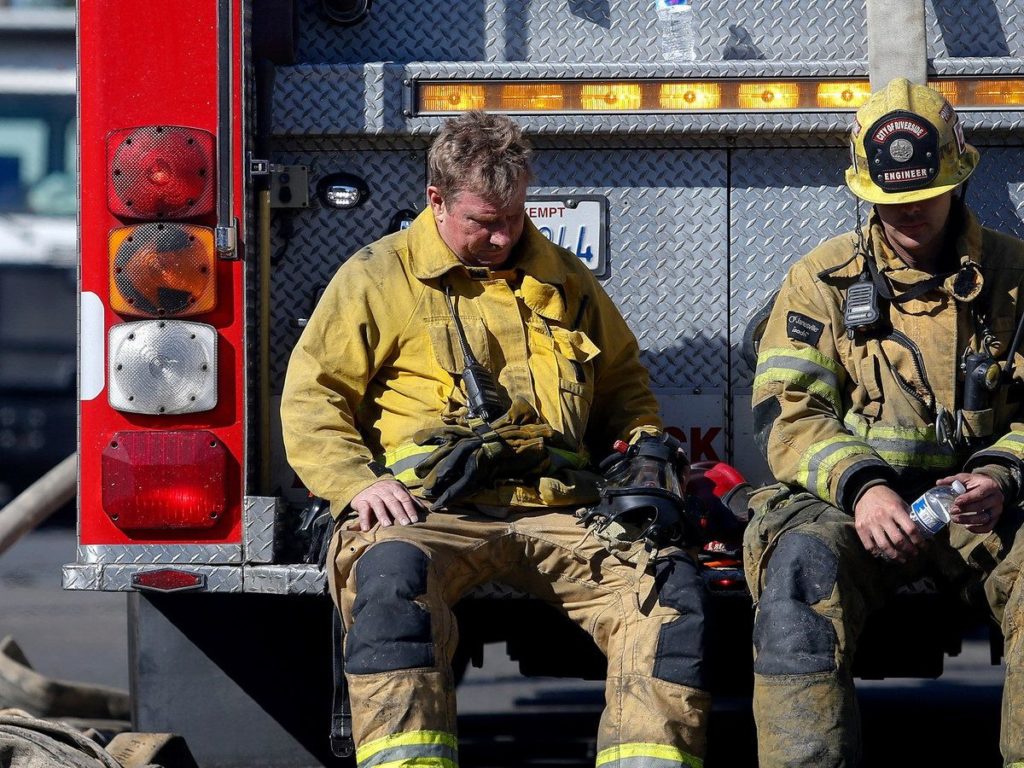Although terms like happiness, joy, satisfaction, relaxation, contentment, and peace are often associated with well-being, there is no concrete definition or tangible scale to measure this state. The proof of the existence of well-being is only measured in its absence and described in one word – stress. Due to the omnipresence of stress in a firefighter’s life, it has become a major topic of identification and measurement for the fire service.
While most short-term stress can be dealt with quickly, long-term and poorly handled stress can have serious consequences, such as physical illness and mental disorders. Research has revealed that stress is the leading cause of firefighter death from heart disease, cancer, stroke, injury, or depression. Stress can occur in chronic or acute forms and manifest anywhere, anytime, and for many reasons.
Clinically, stress is known to be a physical response to change and is, for the most part, unavoidable. Short-term stress can be managed more effectively, while long-term and poorly managed stress can harm physical and mental health.
A FIREFIGHTER CAREER IS RIDDLED WITH EMOTIONAL TRAUMA
Firefighters experience death and disaster throughout their careers. Each call builds on the next, eventually leading to a stress response that can negatively impact their mental health and career longevity. Managing stress from an individual incident or accumulation is crucial to maintaining overall well-being.
First responders have always wanted to stabilize and restore their well-being after experiencing trauma and tragedy. As far back as World War II, officers would gather their troops after a battle to share stories of bravery and sacrifice, which boosted morale and left them better prepared to cope with the next battle. Even today, armies worldwide use debriefing to help their soldiers deal with incidents.

The modern version of psychological debriefing for first responders was developed in 1983 by Dr. Jeffrey Mitchell, a former firefighter and paramedic. He referred to traumatic events as critical incidents and the process of coping with them as “critical incident stress debriefings.” At the time, emergency responders who did not respond with a typical reaction to trauma were considered pathological. Mitchell’s theory was that structured therapy sessions with peers who had experienced similar events would normalize those affected.
During the 1990s, other intervention philosophies emerged from different academic approaches, which led to trivial debates and several approaches, leaving emergency responders in need of psychological intervention lost amid a lack of consistent assessment, diagnosis, and treatment.
MODERN STRESS-REDUCING STANDARDS ARE STILL LACKING
Despite significant progress in understanding and managing stress, viable standards or administrative bodies still need to oversee stress management services. While organizations can describe their practices, there needs to be systematic monitoring or empirical evaluation of outcomes, and information is rarely shared outside individual administrative practices.
Psychology is a complex and diverse discipline, and the medical community cannot apply universal standards to helping caregivers with intermittent or continuing stress. However, the need for critical incident intervention and care is clear.
Emergency service providers must evaluate, standardize, and organize first responder stress management programs. All levels of authority must set aside egocentric statistics and territorial hoarding and focus on what works and why. Emergency service members must provide healthy and productive responders for all communities.
BODY MINDFULNESS IS IMPORTANT TO STRESS REDUCTION
Promoting personal well-being and modifying behavior can effectively reduce stress’s negative effects. Various clinical techniques, including visualization, deep breathing, biofeedback, meditation, and exercise, have succeeded in self-help. For instance, practicing yoga can help reduce anxiety by promoting better breathing techniques.
Natural mind and body techniques provide a strong foundation for personal strength, undermined by artificial relaxation methods such as drugs or alcohol. Rather than masking awareness, relaxation involves increasing awareness while letting go of body tension.
Incorporating healthy habits such as eating well, exercising regularly, and getting sufficient rest can also help counter stress’s negative impact. Sharing professional experiences through debriefing sessions or counseling programs can be critical in supporting emergency service professionals who may require assistance.
Culturally, there has been a shift from viewing individuals as universal victims to recognizing their potential for internal strength and well-being.
A sense of well-being can provide the strength to tackle daily tasks, the energy to accomplish goals, and a deeper purpose in life. It can be found in simple pleasures such as a child’s laughter or a long walk, the beauty of music and art, or the joy of celebrating with loved ones. Although it may be difficult to define, we all recognize the feeling of inner peace.

Today, we understand the importance of promoting well-being and addressing the effects of stress among emergency service professionals. While specific intervention techniques may be subject to debate, it is clear that caregivers occasionally require support and assistance.
